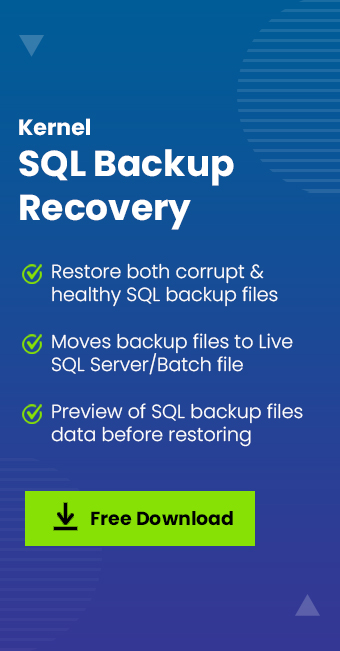Read time: 6 minutes
Structured Query Language (SQL) is a query programming language used for relational database management. But SQL is also prone to many cybersecurity breaches. These attacks often happen due to system vulnerabilities and poor security measures. SQL Injection is also one of the major attacks that can steal your data or damage it to a significant extent.
This article will help you understand how you can prevent SQL Injection attacks to protect your data. But, before that, let’s know what an SQL Injection attack is.
What is SQL injection attack?
SQL injections are one of the most vulnerable web attacks that are used to retrieve sensitive data from organizations. For instance, when you hear about stolen password lists and credit cards, it happens due to SQL injection vulnerabilities. Hackers use malicious SQL queries to bypass the information via input forms to steal the data.
In general, SQL injection is a unique malicious approach used by attackers to insert SQL queries in input fields that the SQL database will process. This shows how user-generated input can directly interact with the underlying database, and hackers can abuse your system by querying the database directly with malicious input data. Let’s better understand this process with an example.
Let’s say a typical login form consists of a user and email field and a password field. Once the info is submitted, the form is combined with an SQL query on the webserver. Now, this query goes to the server to verify if it was given a valid username with the correct credentials. For instance, if the username and password will look like this:
But, if they manipulate the query with something like “Robert’;-, “the query will look something like:
So, the attacker has used the SQL comment syntax, which means the remaining code after the double-dash (-) sequence will not work. Instead, it will return the user data while allowing the login screen to be bypassed. This is a sign of security flaw of a site, but it’s just a simple example. Hackers can go a large mile with such techniques to steal users’ data and information.
How SQL injection is harmful to an organization?
SQL Injection has many implications and consequences that can impact data. Such attacks can affect your data in multiple ways, such as:
- Loss of critical information of credit, debit cards, and more
- Theft of private resources like usernames, passwords, hospital records, etc.
- Database corruption can compromise the entire system in your organization
- Malicious use of personal assets such as login details
These are just a few possible outcomes of a cyberattack, but as an organization, if your data is compromised, it will impact your business reputation.
How to prevent SQL injection attacks?
SQL Injection attacks can be prevented with multiple techniques that ensure your website’s complete safety. Here, we have covered the most effective approaches to avoid SQL injection attacks.
- Use Stored Procedures
- Parametrize Queries
Parameterizing the queries is the first step towards ensuring the security of the code that is being sent to the database. The basic concept of parameterizing is to pre-compile the SQL code to which you can supply the required parameters when they need to be executed. Then, it automatically quotes the generated input in the query, making it impossible to change the intent.Parameterize queries hold a major significance in protecting any website with an SQL database. So, how can you implement this practice into your website?
The first method to parametrize queries is to use the MySQLi extension. This way, you’ll be able to create prepared statements and execute them frequently.
- During the preparation stage, a statement template will be sent to the database
- The database server will check the syntax of the received template and further initialize internal resources that can be used later
- In the execution stage, the client binds the parameter values and send them to the database server
- In the end, the statement is executed by using the bound parameter values in conjunction with the earlier created internal resources
- Input Validation
- Revoke Admin Privileges
- Use a Web Application Firewall
Stored procedures are a great technique for preventing SQL Injection attacks. As a developer, you can optimize your code by writing programs in the form of procedures that are stored for later use. A storing procedure is a logical code unit with several statements that can be executed in queues. A seasoned database administrator uses the stored procedure while SQL server restoration with NORECOVERY option and make the new database active and useful again.
The continuous execution of the statements in a stored procedure ensures that they are automatically parametrized. It even allows you to call them whenever you’re executing a query instead of writing it multiple times. With a stored procedure, you can optimize your code and improve the program’s overall efficiency. Apart from protecting against SQL injection attacks, stored procedures are also considered a good programming practice.
Apart from using MySQLi, you can also use PHP Data objects to simplify the concept of parameterized queries.
Input validation is the process of verifying and ensuring legitimate input. First, the validation process checks the input type, such as integers, strings, characters, length, format, etc. Then, it sends the query to the database server to check if it holds up to the validation criteria or not. With this method, you can ensure that no additional commands are inserted in the input. You should also use input validation when you are trying to restore SQL Database with a different name in the same SQL Server engine.
Input validation takes away all types of deception while making it inaccessible for hackers to exploit any possible loopholes through their input. Apart from validating input for username and password fields, you must also validate structured data.
A website’s server should be limited to user access, and it should be done as a last resort. For example, if hackers take control of your server, you need to get rid of it as administrative privileges. Besides, you should also take a look at the number of applications that use the server.
The best practice is to choose the least privileged option possible to prevent SQL Injection. Therefore, you should set the user rights and privileges appropriately.
Having a web application firewall can help you identify SQL injection attacks quickly. It operates in the front of the webserver, monitors the traffic that goes in and out of the web servers, identifying patterns that constitute a threat. It works as a barrier between web applications and the internet.
WAF operates on customized web security rules set by the providers based on your website requirements. It even helps identify the weaknesses and traffic behavior on your website server.
The above techniques can help you prevent SQL Injection attacks to a major level. However, disaster can take place even if you take preventive measures. So, the best approach is to restore your SQL data from SQL backup files. To restore your SQL data, you can use an automated solution like Kernel SQL Backup Recovery, specifically designed to restore the entire SQL data.
It is an advanced tool designed to help you restore your entire SQL data to live SQL/Batch files from SQL backup files. It is capable of recovering MDF/NDF files from .bak files of any size. It even comes with the preview facility of SQL data before restoration.
Wrap up
SQL injection is a major attack that can steal critical data and impact your business’s reputation in the market. It is generally executed by hackers with a good knowledge of SQL queries and commands. Thus, it is vital to take preventive measures to protect your SQL server from such attacks. This article highlights the best practices to prevent SQL injection attacks and how you can use an alternative approach to protect your data.








